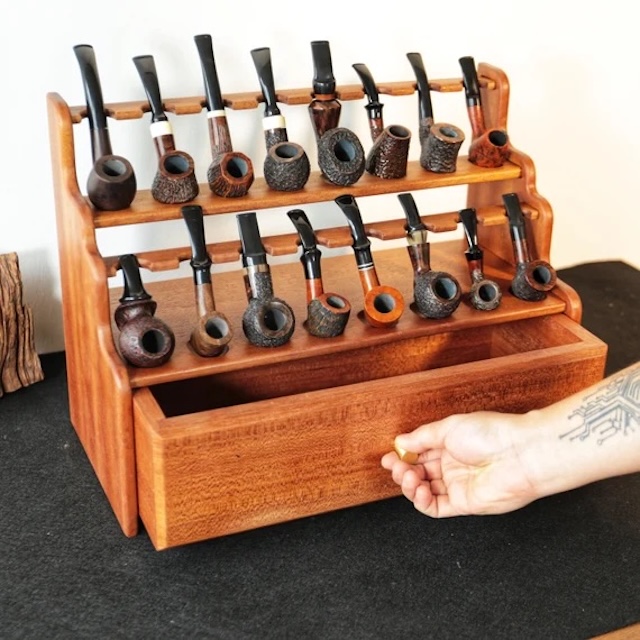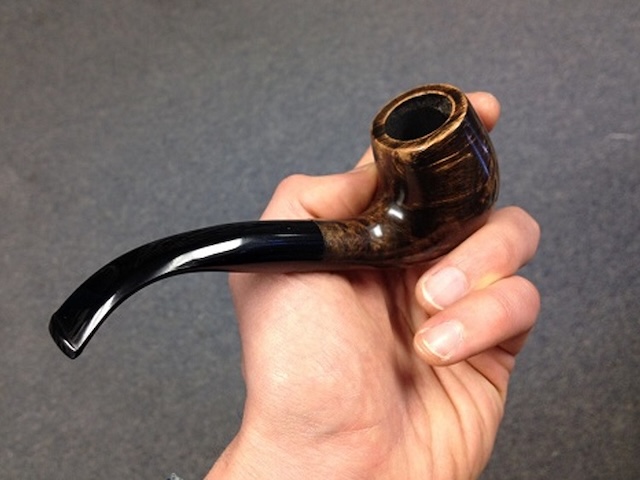Picture a dimly lit study in the 1940s, leather-bound books lining oak shelves, and in the hand of a thoughtful gentleman rests a classic briarwood tobacco pipe. Each evening, he would fill the bowl with carefully blended tobacco, draw a match across its head, and watch the glowing ember swirl beneath curling tendrils of smoke. That simple, deliberate act—packing, lighting, tamping—became more than a habit; it was a moment of reflection. In this story, we’ll trace how that humble pipe shaped traditions, friendships, and even culture.
Rooted in the Earth: The Story of Briarwood and Its Unique Qualities
The journey of the classic briarwood tobacco pipe begins on the sun-baked slopes of the Mediterranean. From the resilient root burl of Erica arborea, or white heath, artisans harvest knots of wood that, when dried and cured, withstand intense heat without cracking or charring. Briar’s dense grain wicks away moisture, ensuring each draw remains cool and dry—essential for a clean, flavorful smoke.
In the mid-19th century, French craftsmen first recognized briar’s promise. They began turning these burls into smooth, polished bowls, transforming what was once discarded root into prized smoking instruments. Soon, London’s gentleman clubs and New York’s parlors filled with the slow, fragrant ceremony of pipe smoking. By the early 20th century, virtually every tobacconist carried dozens of shapes—billiards, bulldogs, pot bowls—each showcasing briar’s honeyed patina and natural endurance.

Video
Take a look behind the scenes as this video shows how a stunning freehand briar tobacco pipe is crafted using just simple tools—it’s a must-watch for any pipe enthusiast!
Anatomy of a Gentleman’s Companion: Design, Craft, and Function
At first glance, the classic briarwood tobacco pipe looks deceptively simple: a wooden bowl, a shank, and a stem. Yet each component serves a precise purpose:
The Bowl
Carved from a single briar burl, the bowl’s thickness buffers heat. Internal walls often bear a thin layer of “cake”—the carbon residue that, over time, forms a protective barrier, further insulating the wood.
The Shank and Stem
The shank (the wooden extension of the bowl) channels smoke into the stem, traditionally made of vulcanite or acrylic. The junction often bears a metal band—nickel or silver—for reinforcement and decoration.
The Mouthpiece
Ergonomically shaped to fit comfortably between lips, the bit is flattened to prevent slipping and sometimes carries a maker’s hallmark.
Aesthetic Flourishes
Turned rings, smooth sandblasts, or polished rustications highlight the natural grain. Some artisans inlaid silver or gold accents, making each pipe a work of art as much as a utility.
Master pipe‐makers measured every angle to ensure optimal airflow, perfect draw resistance, and balanced weight. The result was a smoking companion—as personal as a fountain pen or cork‐handled cane.
Smoke Rings and Conversations: Social Rituals of the Pipe-Smoking Circle
Pipes have long been catalysts for camaraderie. In city clubs of the 1930s, businessmen lingered over brandy and cherry‐cured leaf, comparing blends and sharing tales. In university common rooms, students passed custom pipes between lectures, debating literature and reform. The ritual often followed a familiar cadence:
Packing the Bowl
A pinch of tobacco was sprinkled in, then gently tamped. This “fluff and tamp” method ensured even burn—carefully learned and proudly perfected.
Lighting and Initial Draw
A match or hand‐rolled paper was applied, followed by a series of shallow puffs that coaxed the ember to life. During this “charring light,” any uneven spots were corrected.
The Conversation
Once the bowl settled into a steady glow, talk would flow—philosophical, humorous, confidential. The slow pace of the pipe allowed for thoughtful pauses, giving weight to every word.
Tamping and Relighting
Every ten minutes or so, a gentle tamp and relight kept the ember fresh, extending the session and deepening the discussion.
This unhurried ritual contrasted sharply with the hurried flick‐and‐smoke of cigarettes that rose to dominance mid-20th century. Time spent with a classic briarwood tobacco pipe became a mini-retreat: a shared refuge from deadlines and noise.

Pipes in History and Popular Culture: From Naval Decks to Film Sets
The classic briarwood tobacco pipe left its mark beyond private studies:
Naval Tradition
British and American sailors prized briar pipes for their resilience at sea. Naval officers’ mess halls echoed with polite drags beneath the Naval flag, reinforcing bonds amid long voyages.
Literary Greats
From Mark Twain’s affectionate mentions of “smoking my cob pipe” to J.R.R. Tolkien’s portrait of Bilbo Baggins puffing on his briar, pipes became synonymous with wisdom and wanderlust.
Hollywood Glamour
Humphrey Bogart’s silhouette—pipe in hand, trench coat askew—became an icon of film noir. Though many gold‐glove studio pipes were faux, audiences associated that slow tendril of smoke with intrigue and cool composure.
Mid-Century Advertisements
1950s print ads showcased pipes alongside flasks and cigars, all under the banner “A Gentleman Knows His Taste.” These images wrapped briar pipes in an aura of sophistication—no accessory more telling than the one perched on a polished mahogany desk.
Even as cigarettes eclipsed pipes in the ’60s, film and literature preserved their allure, ensuring the classic briarwood tobacco pipe remained a symbol of introspection and refinement.
Collecting and Caring: How Enthusiasts Preserve Their Briarwood Heirlooms
Today’s pipe‐smokers and collectors follow time‐honored practices to keep briar beauties in top form:
Resting and Rotation
After a smoke, the pipe must fully cool and dry. Enthusiasts often rotate between multiple pipes—allowing 24–48 hours of rest to prevent souring.
Cleaning the Bowl and Stem
A gentle reaming removes excess cake, maintaining an ideal carbon layer. Alcohol swabs clear tar from the stem, ensuring smooth draw.
Polishing the Finish
A dab of carnauba wax adds luster and protection. Over time, the briar patinates to a rich, amber glow—testimony to years of measured puffs.
Valuing Vintage Pieces
Pre‐war French or Danish pipes—often rare or limited‐edition—fetch hundreds or thousands among aficionados. Knowing a maker’s signature, grading condition, and provenance all factor into legacy and price.
Online forums, smoke‐filled lounges, and annual pipe shows bring communities together. Here, “pipemeisters” trade tips for rebaling stems, share rare tobacco blends, and celebrate the craftsmanship of their shared passion.

Lessons in Patience and Presence: The Timeless Appeal of Slow Rituals
In a world that prizes speed, the classic briarwood tobacco pipe reminds us of the beauty in deliberate practice:
Mindful Pace
Each draw invites observation: the swirl of smoke, the taste of tobacco, the feel of warm briar. Moments of calm expand in significance.
Intentional Craft
From selecting tobacco and packing the bowl to carefully cleaning after use, every step requires care—echoing values of workmanship and respect for materials.
Community and Storytelling
Pipes forge silent bonds between smokers—no words needed as two people peacefully puff. Over shared silence or soft conversation, friendships deepen.
These lessons resonate far beyond tobacco. They speak to the human need for ritual, slowing down, and savoring ephemeral pleasures.
Conclusion: Honoring a Humble Vessel of Thoughtful Moments
Though modern trends have shifted to vaporizers and cigarettes, the classic briarwood tobacco pipe endures as an emblem of measured luxury and shared reflection. Its journey—from a Mediterranean burl to an artisan’s workshop, from naval decks to silver screens—reflects centuries of human ingenuity and the search for moments of pause.

When you cradle a well-worn briar pipe—run your thumb along its polished curves, breathe in its faint woody aroma, and feel its warmth in your palm—you connect to generations of thinkers, poets, and friends who found comfort in that timeless ritual. In celebrating the humble briarwood pipe, we celebrate the art of slowing down and the simple joy of thoughtful company.
Video
Discover the craftsmanship behind Peterson of Dublin pipes in this fascinating video that walks you through how these iconic pieces are made from start to finish.



